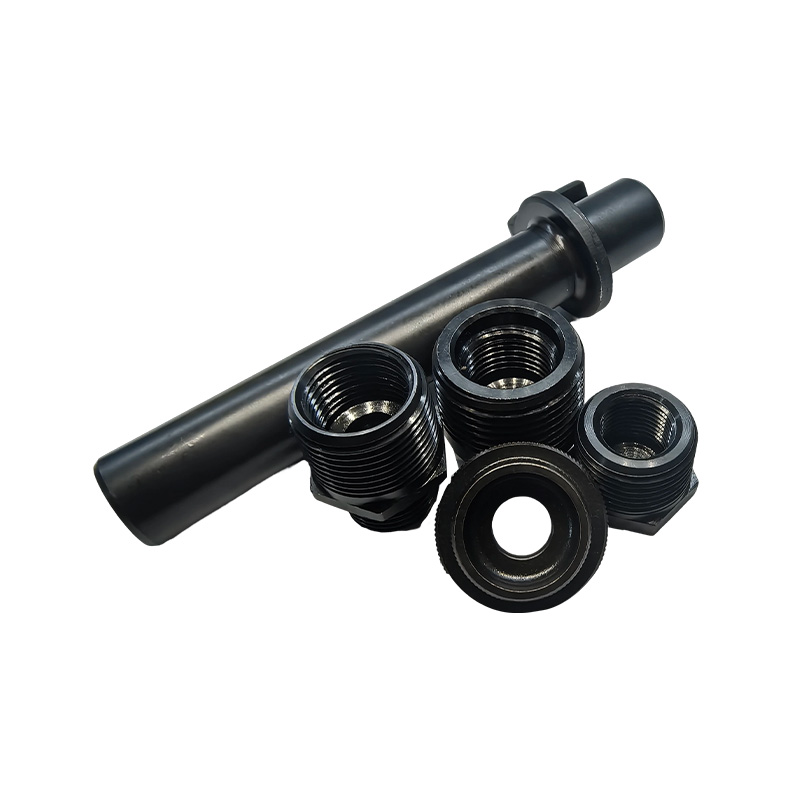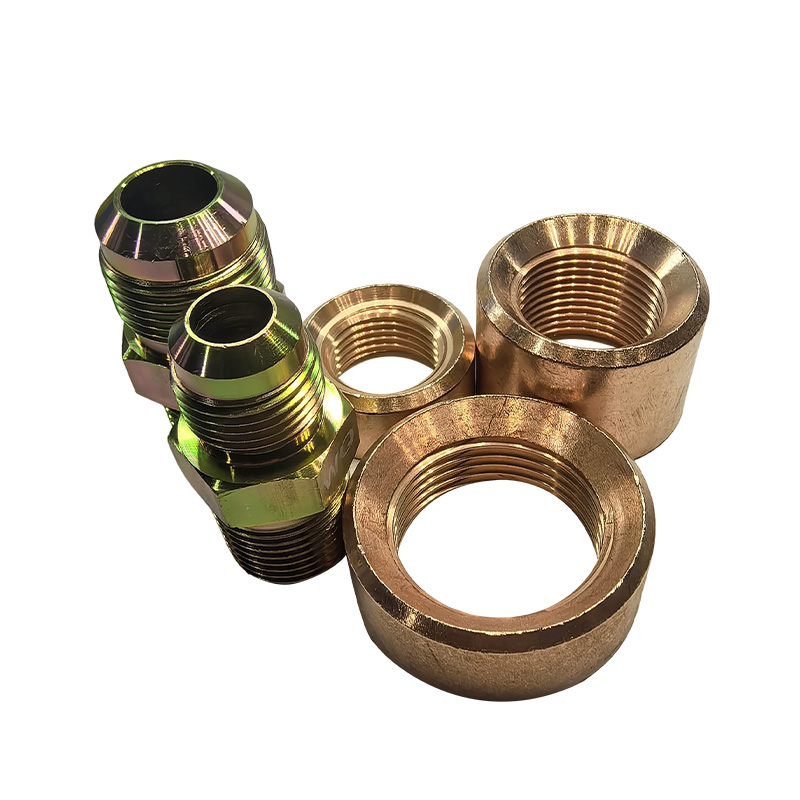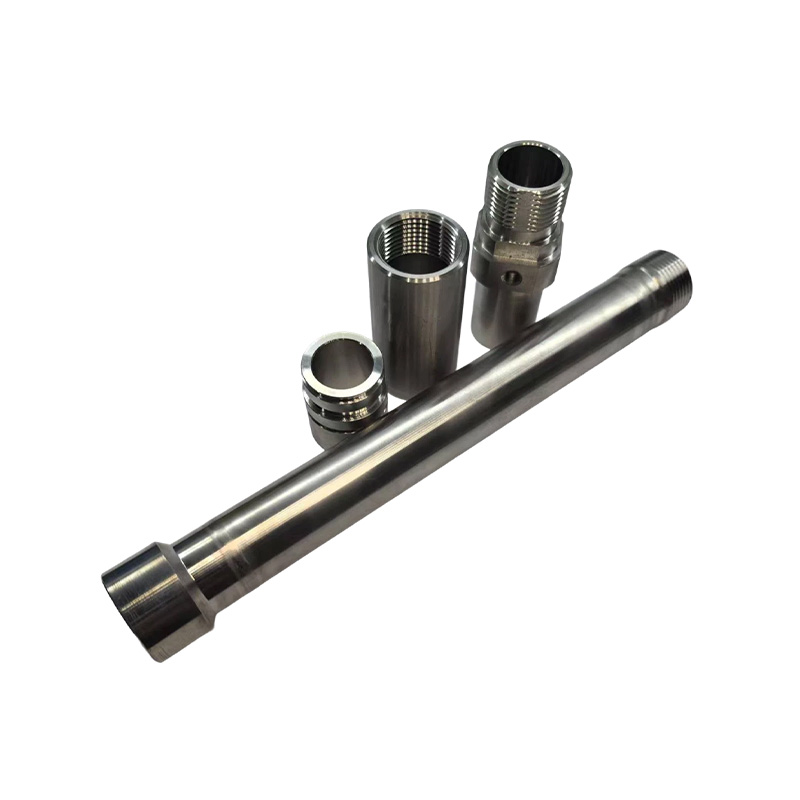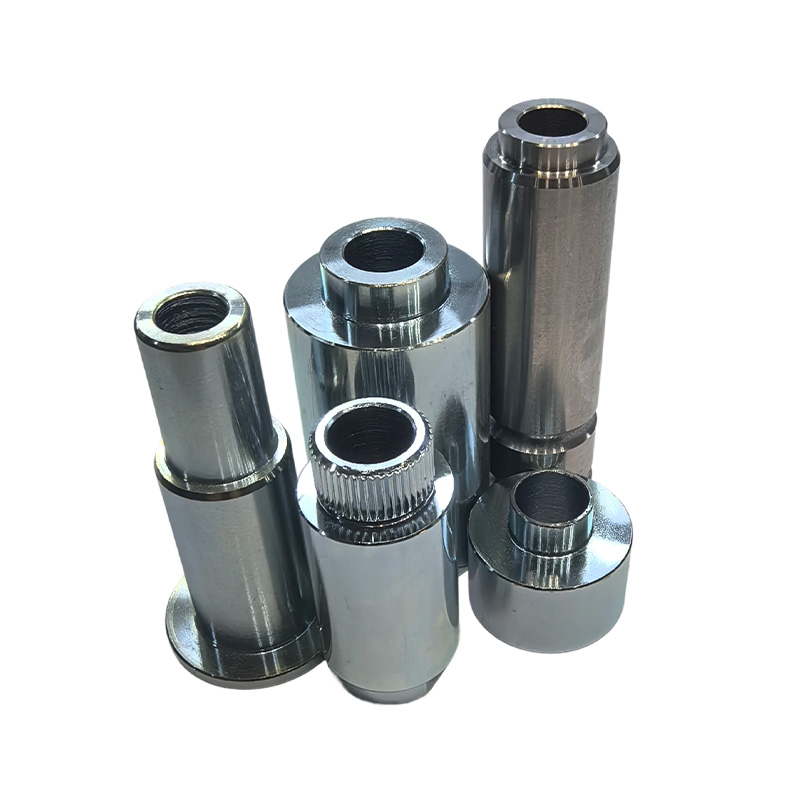Why do stainless steel products remain rust-free in humid environments?
Release Time : 2025-09-25
In everyday life, we often see iron objects quickly develop reddish-brown rust in rain, moisture, or salt spray. This not only affects appearance but also weakens structural strength. However,stainless steel products accessories, such as those used in humid and even corrosive environments, remain rust-free over long periods of time, demonstrating exceptional durability.
1. A Natural "Protective Shield": The Formation of a Surface Passivation Film
Stainless steel's "rustproof" status isn't due to its complete chemical inertness, but rather to the extremely dense and stable passive film that spontaneously forms on its surface. When stainless steel is exposed to air or moisture, it forms a protective oxide layer that rapidly reacts with oxygen. This film, primarily composed of chromium oxide, has a dense structure and strong adhesion, effectively shielding the metal from corrosive media such as water, oxygen, and chloride ions, thereby preventing further oxidation. Even with minor scratches, the passive film can "self-repair" and re-cover the damaged area in the presence of oxygen, providing continued protection.
2. Synergistic Effects of Alloying Elements: More Than Just Chromium
While chromium is a key element in forming the passive film, modern stainless steel often contains a variety of other alloying elements, including nickel, molybdenum, manganese, and titanium, which collectively enhance the material's overall performance. The addition of nickel significantly enhances stainless steel's stability in acidic environments and improves its processability and toughness. Molybdenum effectively increases the material's resistance to chloride ions, making it particularly suitable for use in salty environments such as coastal areas or around swimming pools. Manganese and nitrogen can partially replace nickel, reducing cost while increasing strength. Titanium or niobium stabilizes carbon and prevents intergranular corrosion at high temperatures. The optimal balance of these elements enables stainless steel to adapt to diverse corrosive environments, from home kitchens to marine engineering.
3. Adaptability to Various Humid Environments
Stainless steel performs well in a variety of humid environments. In kitchens and bathrooms, 304 stainless steel provides long-term protection against steam, detergents, and mild acids and bases. In coastal areas or areas with high salt spray, 316 stainless steel, due to its molybdenum content, offers enhanced resistance to pitting corrosion. In industrial or chemical environments, duplex stainless steel or high-alloy stainless steel offers enhanced resistance to chemical attack. By choosing the right stainless steel grade, you can precisely match it to the operating environment, ensuring long-term rust protection.
4. Surface Treatment Enhances Protection
In addition to the material itself, the surface treatment of stainless steel products also significantly impacts their rust resistance. Common processes such as brushing, mirroring, sandblasting, and electropolishing not only enhance aesthetics but also reduce surface roughness, reducing the potential for dirt and moisture retention, thereby reducing the risk of localized corrosion. Electropolishing, in particular, further thickens the passivation film, seals micropores, and significantly improves corrosion resistance and ease of cleaning. It is widely used in food, pharmaceutical, and medical equipment.
5. Proper Use and Maintenance Extends Lifespan
Although stainless steel has excellent corrosion resistance, it can still develop rust or pitting under extreme conditions. Therefore, regular cleaning, avoiding contact between dissimilar metals, and promptly flushing away salt residue help maintain optimal performance.
The reason stainless steel products remain rust-free in humid environments is that the natural passivation film formed on their surface acts as an "intelligent protective shield." This, combined with rational alloy design, advanced surface treatment, and scientific use and maintenance, creates a comprehensive corrosion protection system. It is not only an outstanding achievement in materials science, but also an important guarantee for modern life quality and engineering safety.
1. A Natural "Protective Shield": The Formation of a Surface Passivation Film
Stainless steel's "rustproof" status isn't due to its complete chemical inertness, but rather to the extremely dense and stable passive film that spontaneously forms on its surface. When stainless steel is exposed to air or moisture, it forms a protective oxide layer that rapidly reacts with oxygen. This film, primarily composed of chromium oxide, has a dense structure and strong adhesion, effectively shielding the metal from corrosive media such as water, oxygen, and chloride ions, thereby preventing further oxidation. Even with minor scratches, the passive film can "self-repair" and re-cover the damaged area in the presence of oxygen, providing continued protection.
2. Synergistic Effects of Alloying Elements: More Than Just Chromium
While chromium is a key element in forming the passive film, modern stainless steel often contains a variety of other alloying elements, including nickel, molybdenum, manganese, and titanium, which collectively enhance the material's overall performance. The addition of nickel significantly enhances stainless steel's stability in acidic environments and improves its processability and toughness. Molybdenum effectively increases the material's resistance to chloride ions, making it particularly suitable for use in salty environments such as coastal areas or around swimming pools. Manganese and nitrogen can partially replace nickel, reducing cost while increasing strength. Titanium or niobium stabilizes carbon and prevents intergranular corrosion at high temperatures. The optimal balance of these elements enables stainless steel to adapt to diverse corrosive environments, from home kitchens to marine engineering.
3. Adaptability to Various Humid Environments
Stainless steel performs well in a variety of humid environments. In kitchens and bathrooms, 304 stainless steel provides long-term protection against steam, detergents, and mild acids and bases. In coastal areas or areas with high salt spray, 316 stainless steel, due to its molybdenum content, offers enhanced resistance to pitting corrosion. In industrial or chemical environments, duplex stainless steel or high-alloy stainless steel offers enhanced resistance to chemical attack. By choosing the right stainless steel grade, you can precisely match it to the operating environment, ensuring long-term rust protection.
4. Surface Treatment Enhances Protection
In addition to the material itself, the surface treatment of stainless steel products also significantly impacts their rust resistance. Common processes such as brushing, mirroring, sandblasting, and electropolishing not only enhance aesthetics but also reduce surface roughness, reducing the potential for dirt and moisture retention, thereby reducing the risk of localized corrosion. Electropolishing, in particular, further thickens the passivation film, seals micropores, and significantly improves corrosion resistance and ease of cleaning. It is widely used in food, pharmaceutical, and medical equipment.
5. Proper Use and Maintenance Extends Lifespan
Although stainless steel has excellent corrosion resistance, it can still develop rust or pitting under extreme conditions. Therefore, regular cleaning, avoiding contact between dissimilar metals, and promptly flushing away salt residue help maintain optimal performance.
The reason stainless steel products remain rust-free in humid environments is that the natural passivation film formed on their surface acts as an "intelligent protective shield." This, combined with rational alloy design, advanced surface treatment, and scientific use and maintenance, creates a comprehensive corrosion protection system. It is not only an outstanding achievement in materials science, but also an important guarantee for modern life quality and engineering safety.







